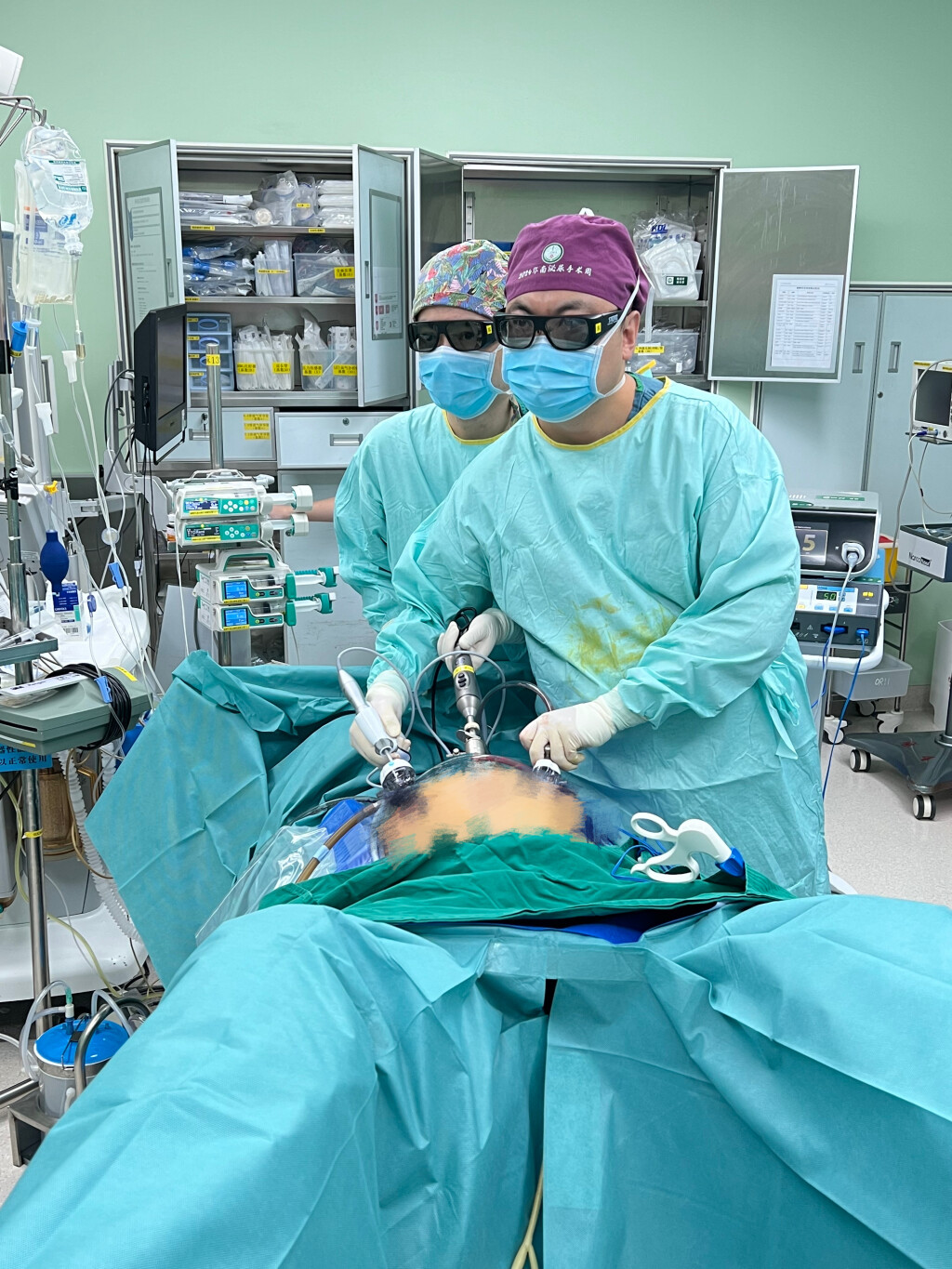A team led by Yu Hao, associate professor from the Organ Donation and Transplantation Management Center of Sun Yat-sen Memorial Hospital, has recently completed Guangdong's first 3D laparoscopic allogeneic kidney transplantation donated by deceased citizen. This procedure marks a significant advancement in minimally invasive surgical techniques for organ transplantation.
Traditional kidney transplant surgeries typically require a large incision of approximately 20 centimeters. However, leveraging the precision of 3D laparoscopy, the surgical team was able to perform the entire procedure through a smaller incision of less than 10 centimeters. This approach not only reduces surgical trauma but also significantly lowers the risk of wound-related complications, offering a promising alternative for patients in need of kidney transplants.
Ms. He (assumed name), a patient under follow-up care at the Department of Nephrology of the hospital, was matched with a compatible donor kidney in June after a matching process.

Associate Professor Yu Hao performs 3D laparoscopic kidney transplant surgery for the patient. (Photo provided to GDToday)
Prior to the surgery, Yu conducted a thorough assessment of Ms. He's condition. Considering factors such as her body type and the donor's vascular length, Yu proposed the use of 3D laparoscopic surgery to minimize surgical trauma without imposing additional financial burden on the patient. Ms. He agreed to this minimally invasive approach after careful consideration.
Yu explained that conventional kidney transplant surgeries often require a large incision in the lower right abdomen, which is particularly challenging for obese patients and complicates vascular anastomosis. In contrast, the 3D laparoscopic approach allows surgeons to insert the kidney into the abdomen through a smaller incision near the pubic bone, facilitating precise vascular anastomosis under magnified vision and tension-free conditions.
Under the skilled hands of the surgical team, Ms. He underwent a successful kidney transplant and was able to get out of bed the next day after the operation. Her recovery has been progressing well, and she was recently discharged from the hospital.
At present, relatively few medical centers in China carry out minimally invasive laparoscopic kidney transplantation, and most of them use robots for kidney transplantation donated by relatives. For laparoscopic kidney transplantation donated by deceased citizen, the technical requirements for the repair of the donated kidney and the laparoscopic kidney transplantation are relatively high. This novel procedure expands treatment options for patients requiring kidney transplants.
Author | Hannah
Editor | Nan, Monica, James
















